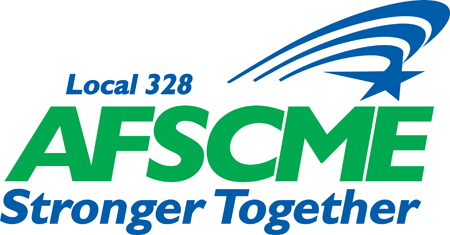Training Our Board to Uproot White Supremacy
As Local 328’s first diversity, equity and inclusion chair, I don’t have past practices to look to. DEI work has been done haphazardly by our union in the past, but there is no actual foundation for the work. In all of Oregon AFSCME, only Multnomah County Local 88 has a similar position — this person is also new to the role. It seems like unions have generally left this work to employers, which has been to our membership’s detriment. Employers don’t always do a great job at DEI work (OHSU is no exception to this), but our union hasn’t either.
Many businesses and nonprofits put their leaders through some kind of DEI training — Local 328 should be no different. Our executive board represents a wide variety of employees and we need to be responsive to their needs. So, the first thing I wanted to do after our election in September was to put the board through a DEI training.
On Nov. 4, board members participated in a Zoom training on uprooting white supremacy in organizations, facilitated by the Anti-Oppression Resource and Training Alliance. Our DEI committee chose AORTA for this training because of their focus on organizational structure and because they are a worker-owned collective. I’ve attended several DEI trainings over the years, and while there were some aspects that were familiar, this training offered a new perspective I hadn’t seen before.
AORTA frames its work through fighting “white supremacy” instead of “racism.” The use of this term is intentional: white supremacy is grounded in both the historical (the violent colonization of America, chattel slavery, redlining, etc.) and the present (the prison-industrial complex, unequal health outcomes for people of color, recruiters preferring résumés with white-sounding names). White supremacy is an institution with a set of practices ensuring that people who are considered white are afforded economic, political and cultural benefit at the expense of people who are not considered white. AORTA’s focus is less on white-supremacist individuals in organizations, and more on the culture of white supremacy. This framework trusts that working to end white supremacy will lead to the liberation not just of Black, Indigenous and other people of color, but also of white people. And because white supremacy is tied to sexism, homophobia, transphobia and ableism, it moves us towards liberation for all people.
White supremacy manifests in three ways:
Interpersonal (interactions between individuals — many DEI trainings focus on this)
Institutional (policies and practices within an organization)
Cultural (beliefs that govern an organization)
The institutional and cultural aspects interested me the most. Some of the training topics that really resonated with me were:
Equity work: How is this defined? If we look at Local 328’s steward program, we see that most of our stewards are white. A diverse steward program, where everyone is represented and a variety of viewpoints help enrich us, is desirable. But what would that mean? How would we know if the program was diverse? We have no definition of what success would mean. Is it based on a number? Numbers aren’t everything. What’s a meaningful way to define success?
No trust in feedback: Do we have a system for our represented employees and member leaders to report equity concerns? More importantly, do they trust it? I don’t think so.
Fear of conflict: Being on our board, I can tell you first hand that conflict is part of being in an organization, and how an organization deals with conflict is so important. Do we value politeness over honesty? Do we scapegoat people who are “disruptive”? If we don’t have a culture of willingness to engage with conflict and the policies around it, then our union becomes stagnant, discussions around race and equity are stifled and people of color get discouraged from participating in our union.
Transactional goals: It is easy to set measurable goals around doing this work, but goals can’t be held in higher value than meaningful engagement. The longer I do DEI work, the more I learn that it’s built on relationships. Building relationships takes longer than ticking boxes. How do Local 328’s leaders build relationships with our members of color?
The “Uprooting White Supremacy in Organizations” training only lasted two hours — it wasn’t set up to solve these problems, but for our board to begin to question our own policies and culture. In early December, we meet for a strategic-planning retreat — this is an opportunity for us to set our intentions for 2022. I’m thinking a lot about how we can take what we learned in the workshop, look at the questions we ask about ourselves and use that to guide our work.
If you are interested in learning more about the work of the Local 328 DEI committee, feel free to email me.

